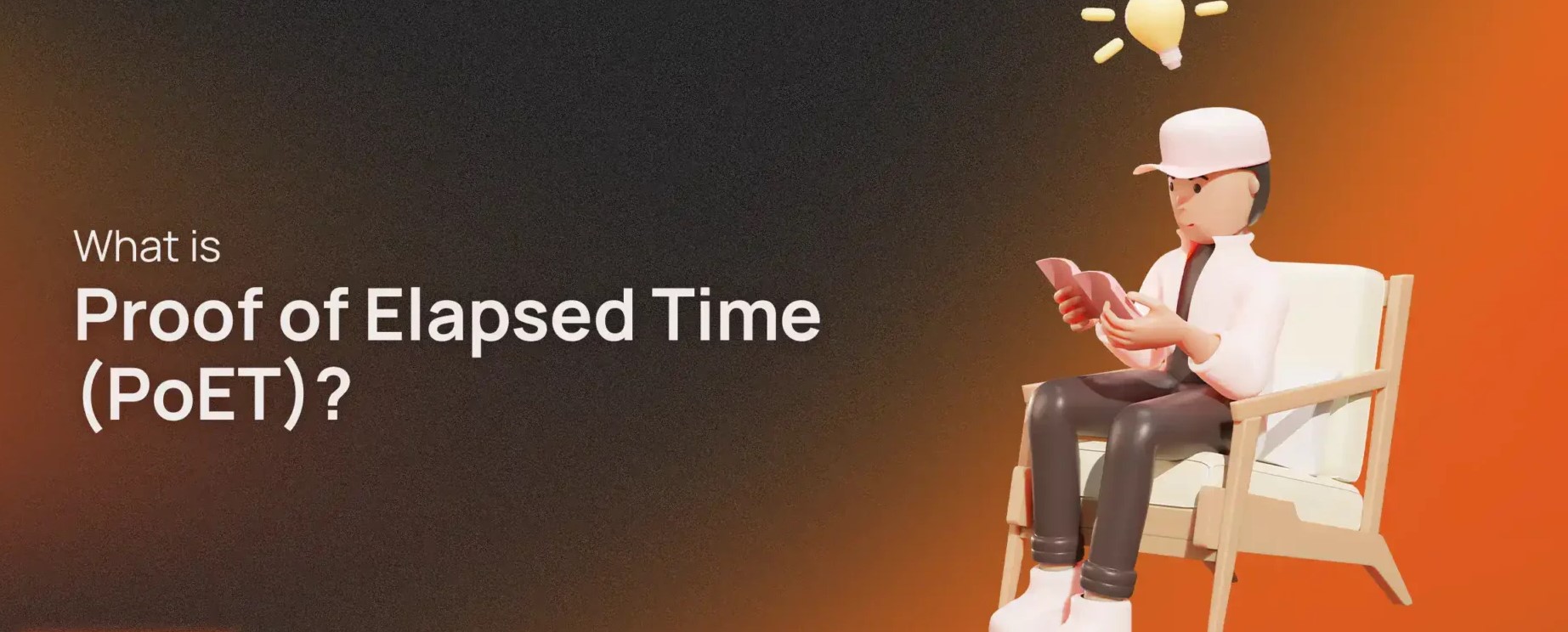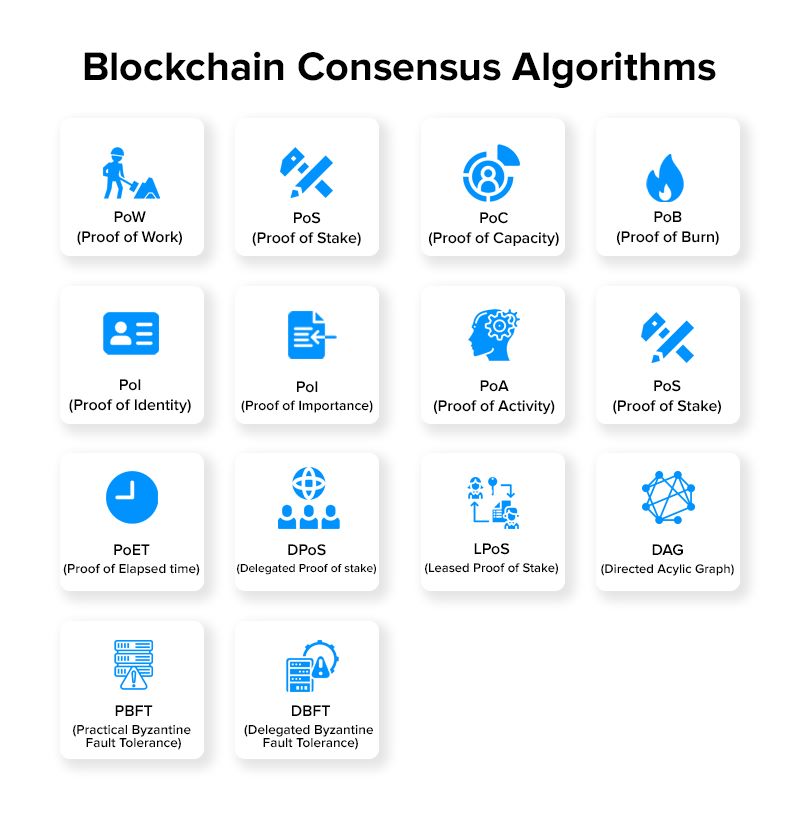In the bustling world of blockchain, you hear about “proof of work” and “proof of stake,” but do you know about what is proof of elapsed time in blockchain? This mechanism is a game-changer, making blockchain secure while saving energy. It’s a clever way to keep records without wasting resources. Stick around, and I’ll break down how PoET sets itself apart, with uncomplicated insights into its inner workings and advantages over other consensus methods in the blockchain arena. It’s time we lift the veil on this tech. Let’s dive in!
Understanding the Proof of Elapsed Time (PoET) Consensus Mechanism
Exploring the Core Concepts of PoET
Have you heard of PoET in the blockchain world? It stands for Proof of Elapsed Time. It’s a new way to make sure everyone in a blockchain network plays fair. Think of it as a digital game of hide and seek, where computers take turns to find each other. The winner gets to add the next block of transactions to the chain. But unlike traditional games, there is no cheating. Every player gets a fair shot.
So, how does PoET work? Each computer in the network goes into a digital waiting room. It’s like sitting in the doctor’s office, waiting for your turn. Once the computer’s wait time is over, it gets to be the leader. This lucky computer adds a new set of deals, or transactions, to the blockchain. This makes PoET a cool way to handle transactions quickly and fairly.
Now, you might think, why not just trick the system and cut in line? This is where smart computer tricks come in. With PoET, these computers use Intel SGX. Intel SGX is like a secret code that only special computer parts can read. This code keeps the waiting line secure. It won’t let line-cutters ruin the fun for everyone else.
Comparing PoET with Other Blockchain Consensus Mechanisms
So we’ve got PoET down, right? But how does it stack up against others like PoW or PoS? These are just fancy short ways to talk about different rules for adding blocks to a blockchain.
First, there’s PoW, which you might know from Bitcoin. PoW is like a tough math contest. Computers solve hard puzzles to win the right to add a block. But this can take lots of energy, like leaving all the lights on in a big store overnight. It’s not too friendly for our planet.
Next up is PoS. This method is like a lottery based on how much money you have. The more you own, the better your chances to add a new block. It uses much less power than PoW, which is a big plus.
But PoET is like the new kid on the block. The main thing about PoET is that it uses less power, just like PoS. But it’s also fair like PoW without needing all that energy. PoET treats all players the same. It doesn’t matter how much money you have or how smart your computer is. This keeps things even and is great for saving power.
In conclusion, PoET brings both worlds together. It’s fair and doesn’t waste energy. It’s a way for blockchain networks to work better, stay secure, and use less power. And that, my friends, is a game-changer in the world of blockchain.
The Role of Intel SGX in Enhancing PoET’s Security
Integrating Secure Hardware with Blockchain Technology
Have you ever wondered how PoET keeps blockchain safe? It’s like a vault that uses Intel’s smart tech called SGX to lock down data. Just like a game where everyone waits their turn, PoET makes each computer take a break before adding new info to the blockchain. This wait time is random, so no one can cheat. Intel SGX steps in to make sure this game is played fair. It’s a bit like an unbreakable seal that only lets the real winner add to the blockchain.
Intel designed SGX to protect key parts of the code and data. Think of it as a secret room where only special code can run. Even if something nasty tries to attack the computer, SGX keeps our blockchain game safe. It’s a way of linking the physical safety of computers with the digital world of blockchain. This means stronger security for PoET and less worry for all of us.
Addressing Energy Consumption and Efficiency in PoET
Now, you might be thinking, does PoET use up a ton of energy? Good news – it doesn’t! PoW, another blockchain method, uses as much power as a small country just to keep going. But PoET, it’s like a light bulb compared to a whole power plant. Now that’s what I call smart energy use.
PoET needs less energy because it’s like a game where computers take turns, not a race where everyone’s trying to win at once. This way, they use just a scoop of energy, not a whole bucketful. By combining SGX with this little-and-often approach, PoET makes sure the blockchain doesn’t give our planet a hard time.
Still, folks might ask, is PoET as good as PoW or PoS? Each has its job. PoW is great for open blockchains but loves chugging energy. PoS is like owning a piece of the blockchain pie, and the more you own, the more you matter. With PoET, it’s all about patience and playing fair without burning through fuel. By cutting down on waste we help our blue and green home.
Let’s not forget, computers can make mistakes or even try to trick the system. Intel SGX reduces these risks. Even when things go wrong, PoET and SGX help the network stay on track. High-five for teamwork!
Understanding how PoET and SGX join forces is key to a safer and greener blockchain world. It’s like two superheroes teaming up to protect the city from villains. With SGX backing PoET, your info on the blockchain stays locked up tight and the lights keep shining without using too much juice. It’s a win-win for everyone.
Implementing PoET in Different Blockchain Environments
The Adaptability of PoET in Permissioned vs. Permissionless Ledgers
Let’s dig into how PoET, short for Proof of Elapsed Time, fits in different blockchain types. It shines in many settings. Look at a member-only space, known as a permissioned ledger. Here, PoET helps keep things tight and secure. That’s because everyone knows each other. It’s like having a VIP list at a party. Now, in a wide-open space, called a permissionless ledger, PoET still works well. It’s like a big concert where everyone rocks out together but follows the rules.
PoET is a fair player. It gives everyone a chance to add to the blockchain. It works by using a wait-your-turn system. Everyone gets a random time to wait. When their time’s up, it’s their turn to add a block to the chain. This makes sure no one cuts in line. It’s like taking a number at a deli counter. It’s also cheap to run, which we all love!
Intel’s special tech, SGX, makes PoET even better. It’s like a VIP backstage pass for your computer. It keeps your spot in line safe and sound. No one can steal it or cheat. Can you see now how cool this is?
Scalability and Fault Tolerance Considerations in PoET Deployment
When we put PoET to work in a big crowd of computers, it’s got to stay strong. We call this scalability. It’s like a bus that has to fit more and more people. PoET is great because it doesn’t need super strong computers to run. Even your home computer can join the party.
But, what if things go wrong? That’s where fault tolerance steps in. PoET is smart. It can handle bumps in the road without breaking down. Let’s say a computer tries to mess up the line. PoET’s rules kick in to keep the order. It’s like having a strong fence that keeps the garden safe.
So, PoET isn’t just for one kind of blockchain. It fits many, like a key to many locks. It’s a smart choice for keeping things fair and low cost. It also grows well and stands tough when problems come. As we dive into blockchain’s future, PoET helps us get there with confidence. It’s a friend we want on our journey to a cool and secure digital world.
The Future of Blockchain with PoET: Smart Contracts and Industry Adoption
Enabling Smart Contract Efficiency Through PoET
Now, let’s dig into how PoET can make smart contracts better. Smart contracts are like computer programs that run on blockchain. They help us trade money, property, shares, or anything of value in a clear, conflict-free way without needing a middleman.
Understanding proof of elapsed time is key in this. PoET is a new way of reaching agreement on the blockchain. It’s like having a digital referee to make sure everyone plays fair. PoET works by using a simple idea: each computer in the blockchain network waits for a random amount of time. The first one to finish waiting gets to add new information to the blockchain.
This is super cool because it doesn’t need a lot of power like some other methods. You see, in the world of blockchain consensus mechanisms, there are heavyweight champs like PoW that need a ton of energy, which can get costly and hurt our planet.
But PoET is different. It’s like the smart kid who knows how to solve problems without making a mess. The efficiency of PoET comes from not using tons of energy. Everyone gets a fair shot, so it’s not just the strongest computers that always win. When it comes to validating transactions with PoET, it’s like a game of luck and waiting your turn.
This means smart contracts can run more smoothly without wasting so much juice. People trust them more because Intel SGX, a kind of lockbox for computer code, keeps everything super secure. With PoET handling the smart contracts, they can run fast, cheap, and without hogging energy.
The Ripple Effect of PoET in Various Sectors
But wait, there’s more! The magic of PoET isn’t just for smart contracts. It’s changing whole industries. One big deal is how PoET can help banks. By using PoET, banks can transfer money around the globe fast and keep it safe.
Not just banks though. In healthcare, keeping patient records safe is huge. PoET helps by sharing info only when rules say it’s okay. This keeps private stuff private.
And what about art and music? PoET can track who made something and make sure they get paid when it’s sold or shared.
So, you see, PoET isn’t just some techy buzzword. It’s a real game-changer that’s shaking up how we do all sorts of things. From making sure music artists get their dues to securing our health records, PoET is at the heart of a trust revolution.
Blockchain technology is complex, but at its core, it’s about building trust in a digital age. PoET is a big piece of this puzzle, making the whole system work better for everyone, everywhere. As we keep chasing blockchain innovation, expect to hear a lot more about PoET. It might not be in the headlines like Bitcoin or Ethereum, but it’s working behind the scenes, powering a future that’s fair and full of potential.
So, whether you’re in business, tech, or just keen on how the future’s shaping up, keep an eye on PoET. It’s helping us create a world where deals are square, everyone has a shot, and your stuff stays your stuff. And that, my friends, is a future worth waiting for.
In this post, we looked at what Proof of Elapsed Time (PoET) is and how it works, comparing it to other ways that blockchains reach agreement. We saw how Intel’s SGX tech makes PoET safer, tackling the big issue of energy use in blockchain. We also covered PoET’s flexibility in different blockchain settings, whether open to everyone or not, and how it deals with growth and mistakes. Looking ahead, we talked about PoET’s impact on smart contracts and its growing role in many industries.
I think PoET is a big step for blockchain. It’s energy-smart and scales well, fitting various needs. As it grows, it could change how we see blockchain’s place in tech and business. Keep an eye on PoET; it might just shape the future of digital trust and security.
Q&A :
What exactly is Proof of Elapsed Time (PoET) in blockchain technology?
Proof of Elapsed Time (PoET) is a consensus mechanism used in blockchain systems that is designed to maintain fairness in the process of producing new blocks. It works by having each participating node in the blockchain network wait for a randomly distributed period before contributing to the block creation. This process simulates a lottery, limiting the advantage that high-performance computing systems might have, and ensuring all nodes have a fair chance to contribute to the chain, making it energy-efficient and secure.
How does Proof of Elapsed Time (PoET) differ from Proof of Work (PoW)?
Proof of Elapsed Time (PoET) is fundamentally different from Proof of Work (PoW) in that it does not require extensive computational resources to solve complex puzzles. Instead of competing in terms of computational power, PoET assigns waiting times to each node, which is less energy-intensive. This makes PoET a more environmentally-friendly alternative to PoW, reducing the need for energy consumption and the associated costs without compromising security and decentralization.
Is Proof of Elapsed Time more energy-efficient than other consensus mechanisms?
Yes, Proof of Elapsed Time is considered to be more energy-efficient compared to traditional Proof of Work systems which require substantial computational power and energy to run complex algorithms. PoET reduces the energy requirements by using a random timer to decide the winning node, thus lowering the overall energy consumption of the network and making it a greener alternative.
Can Proof of Elapsed Time be adopted by any blockchain?
In theory, Proof of Elapsed Time can be adopted by any blockchain looking to employ a fair, energy-efficient consensus mechanism. However, implementing PoET requires certain hardware capabilities, such as trusted execution environments (TEEs), to establish secure and verifiable waiting times for nodes. This dependence on specific hardware can limit its applicability to blockchains that support and can enforce these requirements.
What are the security guarantees provided by Proof of Elapsed Time?
Proof of Elapsed Time provides security guarantees by utilizing TEEs to ensure that the waiting times of nodes cannot be tampered with or predicted. This reduces the risk of malicious actors gaining control of the network through manipulation of the consensus process. Additionally, the random distribution of waiting times for block creation makes it impractical for any single node to influence or predict the outcome, enhancing the network’s resistance to centralized control and collusion.


